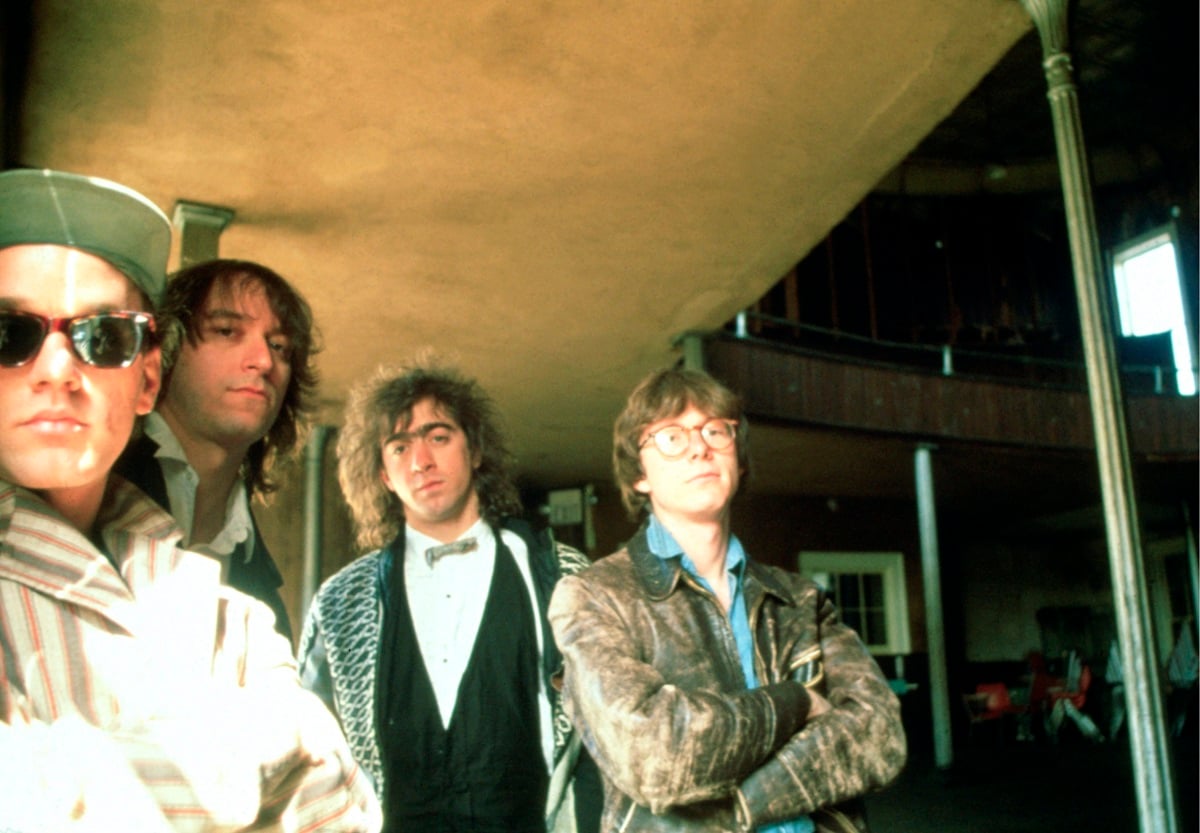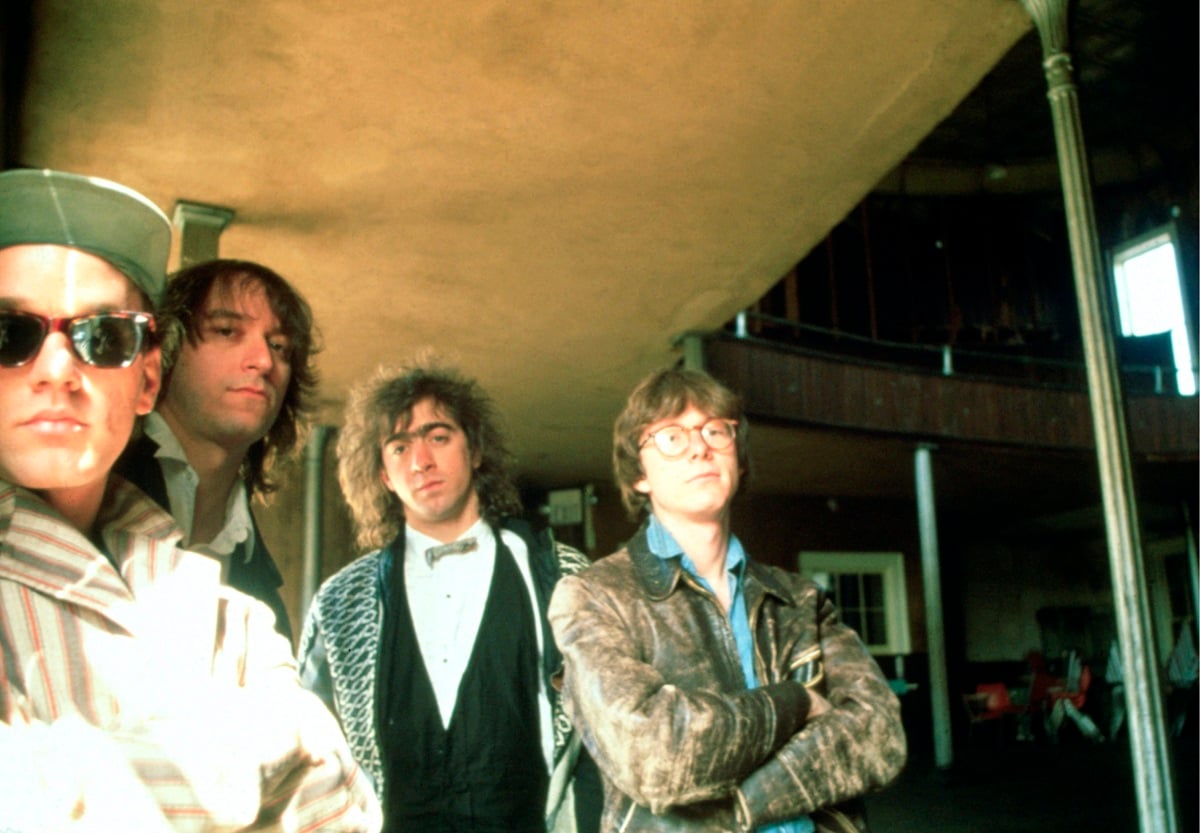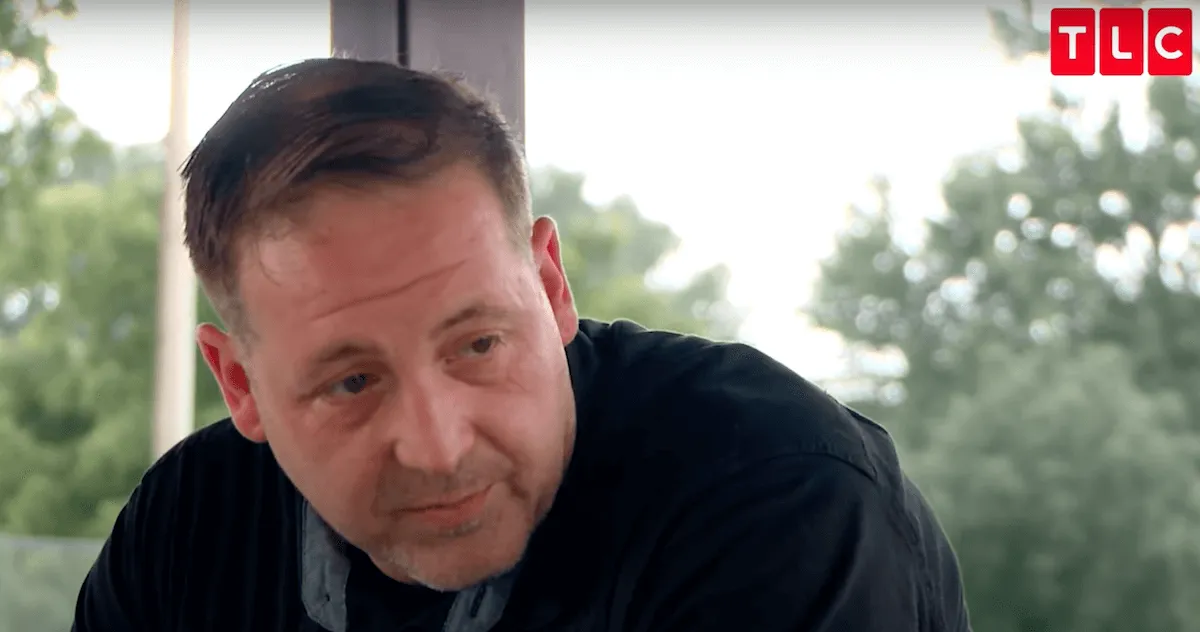
R.E.M. Called ‘Shiny Happy People’ 1 of Their Least Favorite Songs
R.E.M. frontman Michael Stipe wrote “Shiny Happy People” in part to satirize pop music’s ability to entertain. Though the underlying themes of the lyrics are much more serious. But to most of the public, it was simply a pleasant earworm of a song that became one of the band’s rare mainstream hits. The band has since gone on record talking about “Shiny Happy People” and its general reception in less than glowing terms.
‘Shiny Happy People’ was a big hit for R.E.M.

“Shiny Happy People” is the second single from R.E.M.’s seventh album, Out of Time. It was not the biggest song associated with the album. That title belongs to “Losing My Religion.” But it was still incredibly popular, peaking at No. 10 on the U.S. Billboard charts.
“Shiny Happy People” was distinctive because it had little in common with the rest of the band’s discography. On its face, the song is a cartoonishly simple track about blissful people finding each other and creating a utopian community. But the song was written with a dash of sarcasm. The title and chorus were based on a Chinese propaganda poster issued after the Tiananmen Square Massacre in China in 1989. But the symbolism was lost on most listeners. For the majority who didn’t know the backstory to the song, all they heard was a fun little ditty with easily repeatable melodies.
“Shiny Happy People” reached such a fever pitch it was used as the theme song for an unaired version of the Friends pilot. Considering how R.E.M. reacted to the song’s pervasiveness at the time, they’re probably happy not to be synonymous with such an inescapable sitcom.
R.E.M. struggled with ‘Shiny Happy People’s reception for a long time
Out of Time turned R.E.M. into a household name. It is their best-selling album in America at over four and a half million copies. It also won three Grammys. “Shiny Happy People” undoubtedly benefited their trajectory, but the band’s relationship with the song was tenuous at best. (The Independent shares a thorough timeline of the song’s journey over the years.)
They refused to play the song live for a few years. The one exception was for an episode of Sesame Street when it was reworked to be “Furry Happy Monsters.” “It was bubblegum music made for kids,” Stipe told Mojo Magazine in 2016. “Don’t hate it. But I don’t want to sing it.”
Most of R.E.M.’s music aimed to be more introspective about the human experience than “Shiny Happy People.” The rest of Out of Time is much darker as the band members began to reckon with aging and mortality directly. Becoming famous off the back of a song that isn’t in line with their general artistic vision likely irked them and put R.E.M. in a lineage of artists who hate their biggest songs.
Michael Stipe’s love of a seminal ’60s pop group inspired ‘Shiny Happy People’
But the band has slowly warmed up to “Shiny Happy People” over time. In an interview with The Quietus, Stipe spoke about the song and how it showed the audience a different side of him and the band.
“People have this idea of who I am probably because when I talk on camera, I’m working so hard to articulate my thoughts that I come across as very intense,” he said. “But I’m in “Shiny Happy People,” “Stand,” “Pop Song 89,” [and] “Get Up” too. Our fruitloop songs!”
Those “fruitloop songs” owe a great debt to the music of The Monkees. Stipe grew up listening to the group and developed such a reference for the family-friendly harmonies that he once said their music meant more to him than the work of The Beatles.


